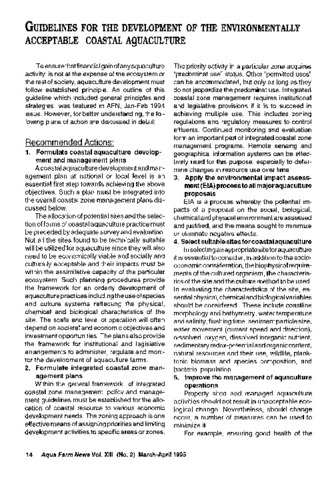The pressing challenges of mangrove rehabilitation: Pond reversion and coastal protection

View/Open
Date
2011Page views
349Metadata
Show full item recordCited times in Scopus
169 readers on Mendeley
Share
Abstract
The 2004 Indonesia tsunami as well as the increasing storm frequency and intensity associated with climate change–sea-level rise have highlighted the coastal protection function, among the many goods and services that mangrove forests provide. This wider awareness of mangroves has increased national and international rehabilitation efforts, given only 15 million ha remaining and yearly rates of 1–3% loss. Rehabilitation programs employ two strategies: seafront planting and pond reversion. Seafront planting is necessary because coastal populations will not move to safer ground by choice, or cannot move due to poverty, and is also preferred because the sites are open access with no tenurial conflicts. However, former sites of fringing mangroves are difficult to rehabilitate as their lower intertidal–subtidal levels are not optimal for mangroves (due to frequent inundation and wave action). Planting in tidal flats and seagrass beds is also ecologically misguided. This chapter evaluates the relevant mainstream and gray literature (on site and species selection, propagule sources, nursery protocols, outplanting techniques, biophysical/anthropogenic threats, and novel interventions, e.g., integrated approaches using barriers) to improve the low survival rates of seafront planting. However, this strategy should not preclude the long-term relocation of coastal communities to safer ground and the politically difficult option of pond reversion. Given thousands of hectares of underutilized and abandoned brackish water ponds in Southeast Asia, this option holds greater potential for rehabilitation of wide areas of mangroves and greater species diversity. It is ecologically easier as it merely requires restoring hydrology (by breaking pond dikes); mangrove recruitment and succession naturally follow (if propagule sources are present) in these ponds located at mid-upper intertidal levels where mangroves naturally occur. The Philippines, with its long history of mangrove–pond conversion and problematic enforcement of laws that mandate mangrove reversion of idle ponds, is examined as a case study. The chapter assesses the Fishpond Lease Agreement (FLA) system by which vast expanses of mangroves were transferred from the public domain (government-leased ponds) to private ownership and recommends ways to improve the FLA system.
Suggested Citation
Primavera, J. H., Rollon, R. N., & Samson, M. S. (2011). The pressing challenges of mangrove rehabilitation: Pond reversion and coastal protection. In E. Wolanski & D. McLusky (Eds.), Treatise on Estuarine and Coastal Science (pp. 217-244). Waltham: Academic Press.
Subject
Collections
Related items
Showing items related by title, author, creator and subject.
-
Paradigm shifts in mangrove rehabilitation in Southeast Asia: Focus on the Philippines
Primavera, Jurgenne H.; Guzman, Armi May T.; Coching, Jofel D.; Loma, Rona Joy A.; Curnick, David; Koldewey, Heather J. (Department of Environment and Natural Resources - Ecosystems Research and Development Bureau (DENR-ERDB), 2014)Mangrove rehabilitation has a long history in the Philippines dating back to the 1930s. The standard practice is the planting of bakhaw Rhizophora propagules by paid community members (or volunteers) in seafront sites ... -
Guidelines for the development of environmentally acceptable coastal aquaculture
Southeast Asian Fisheries Development Center, Aquaculture Department (Aquaculture Department, Southeast Asian Fisheries Development Center, 1995)The paper presents some recommendations for the development of the environmentally acceptable coastal aquaculture such as: 1) Formulate coastal aquaculture development and management plans, 2) Formulate integrated coastal ... -
What are mangroves?
Southeast Asian Fisheries Development Center, Aquaculture Department (Aquaculture Department, Southeast Asian Fisheries Development Center, 1995)The article presents about mangroves and its value to the ecosystem. The different species in the Philippines and mangroves coping mechanisms to the environment are also presented.




